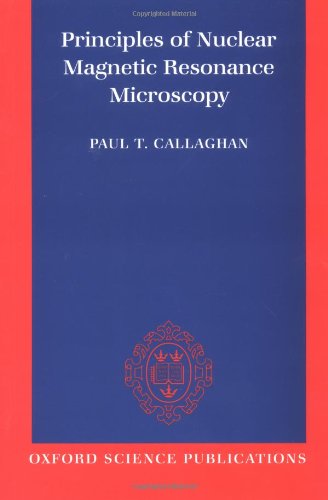Principles of Nuclear Magnetic Resonance Microscopy pdf
Par schwartz nancy le jeudi, août 18 2016, 05:06 - Lien permanent
Principles of Nuclear Magnetic Resonance Microscopy by Paul Callaghan


Download eBook
Principles of Nuclear Magnetic Resonance Microscopy Paul Callaghan ebook
Format: djvu
ISBN: 0198539444, 9780198539445
Page: 512
Publisher: Oxford University Press, USA
This excellent introduction to the subject explores principles and common themes underlying two key variants of NMR microscopy, and provides many examples of their use. The structure determination of proteins by in-cell NMR spectroscopy opens new avenues to investigate at atomic resolution how proteins participate in biological processes in living systems. Download Free eBook:Protein NMR Spectroscopy: Principal Techniques and Applications - Free chm, pdf ebooks rapidshare download, ebook torrents bittorrent download. Magnetic resonance microscopy: recent advances and applications. The basic principles are otherwise similar. For instance, in 29Si NMR spectra of Au-C sample (Figure 2) four resonance lines at −96, −102, −108.3 and −113.6 ppm were identified, which correspond to Si(3Al), Si(2Al), Si(1Al) and Si(0Al) configurations, respectively [27]. The high information content of modern multi-dimensional Although the hyperpolarization strategies differ in their underlying physico-chemical principles they have a number of problems in common. Nuclear Magnetic Resonance (NMR) spectroscopy, microscopy and imaging techniques (MRI) play a crucial role in numerous fields of science ranging from physics, chemistry, material sciences, biology to medicine. In-cell NMR spectroscopy advances our understanding of . NMR phenomena instead of nuclei. The resulting response to the perturbing magnetic field is the phenomenon that is exploited in NMR spectroscopy and magnetic resonance imaging, which use very powerful applied magnetic fields in order to achieve high resolution spectra, details of which are described by the chemical shift and the Zeeman effect.